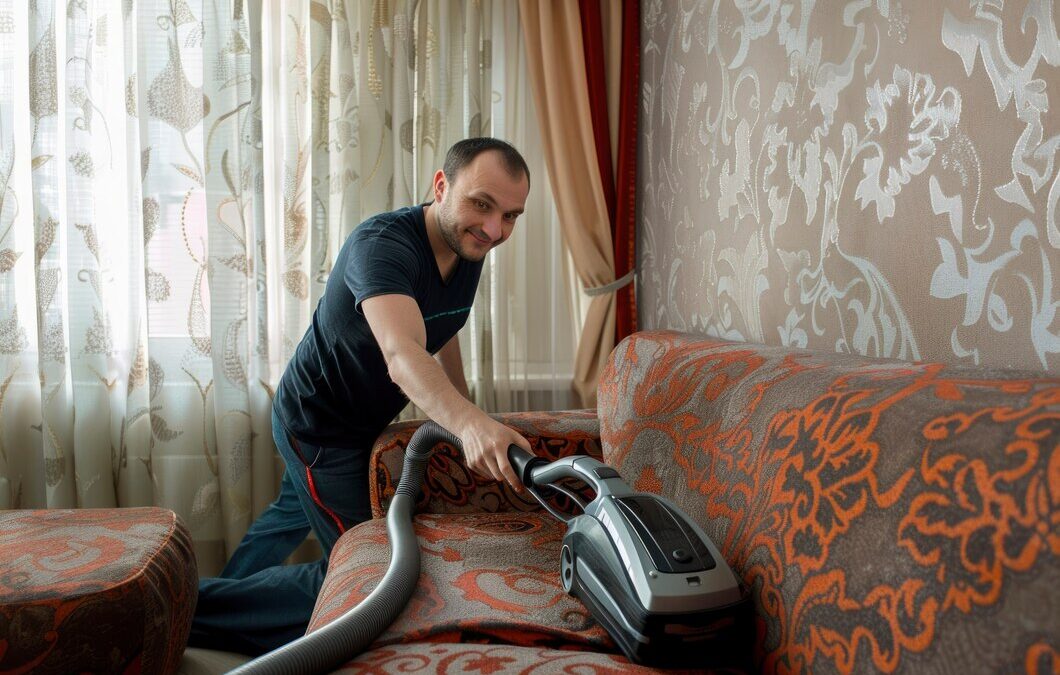Upholstery brings comfort and style to your home, but it is often prone to spills and stains. Acting quickly and effectively can make all the difference in preserving the fabric’s appearance and feel. Whether it’s a splash of juice or an accidental marker mishap, knowing how to address these stains helps maintain your furniture’s good looks.
Different fabrics often require different care, making it crucial to understand what your upholstery is made of before diving into stain removal. Some materials can be cleaned with gentle solutions, while others might demand a bit more attention. Recognizing these needs helps you choose the right approach, ensuring that the material remains unharmed in the process.
With the right tools and know-how, tackling stains doesn’t have to be daunting. Simple and practical methods can save your favorite couch or chair from needing a costly replacement. Embracing these techniques prepares you to handle any stain emergency with confidence, keeping your upholstery in top shape for years to come.
Understanding Upholstery Fabrics and Stains
Different upholstery fabrics require distinct care for effective stain removal. Common materials include natural fibers like cotton and linen, synthetic fibers such as polyester and nylon, and blends that combine various types. Natural fibers often absorb liquids faster, making quick action essential. Synthetic fabrics might resist stains better, but they can be tricky if left untreated for long.
Stains interact differently with each fabric type. For example, oil-based stains, like those from food, may cling to polyester, whereas water-based stains, like juice, may soak into cotton, requiring unique cleaning techniques. Knowing your fabric type helps you choose the proper cleaning method and product. Manufacturers usually provide cleaning codes on furniture tags, offering clues about suitable cleaning methods. For instance, a “W” on the tag means water-based cleaners are safe to use, while an “S” signifies dry cleaning only.
Acting quickly when a stain occurs prevents it from setting into the fibers, which can make it permanent. Blotting spills immediately with a clean cloth absorbs most of the liquid. Avoid scrubbing, as it pushes the stain deeper. Understanding these basics helps you keep your upholstery looking fresh and clean.
Essential Tools and Cleaning Solutions
Having the right tools and cleaning solutions on hand makes tackling stains easier. Here’s a list of must-have tools you should consider:
- Soft, white cloths – for blotting stains without transferring color.
- Soft-bristled brushes – for gently agitating the stain before cleaning.
- Spray bottles – to evenly apply cleaning solutions.
Effective cleaning solutions range from store-bought products to homemade remedies. For regular dirt and mild stains, a simple mixture of water and mild dish soap works wonders. Vinegar and baking soda are great for neutralizing odors and tackling tougher stains. Store-bought products are formulated for specific fabric types, ensuring safety and efficiency.
When selecting cleaning products, read the labels carefully to ensure they are suitable for your upholstery type. It’s also wise to store these solutions in a cool, dry place, away from direct sunlight, to maintain their effectiveness over time. Preparing and organizing these essentials keeps you ready to handle any stain emergency swiftly.
Step-by-Step Stain Removal Process
Immediate action is crucial when dealing with stains on upholstery. Start by blotting, not rubbing, the affected area with a soft, white cloth to lift as much of the spill as possible. This prevents the stain from spreading or penetrating deeper into the fabric fibers. Following this initial step, apply a suitable cleaner per the fabric type. Use a spray bottle for even distribution and a soft-bristled brush to gently work the solution into the stain.
For tougher stains, such as ink or wine, deeper cleaning might be necessary. Prepare a mix of water and mild detergent or a suitable store-bought cleaner, as indicated by your fabric’s care label. Apply the cleaner sparingly and use the brush in circular motions, starting from the outside of the stain and moving inward to avoid spreading. Allow the cleaning solution to sit for a few minutes to break down the stain, then blot again with a clean cloth to remove excess moisture and remaining residue.
Avoid common mistakes that can worsen the situation, such as using hot water, which can set stains permanently, or using excessive cleaning products that might damage the fabric. Always perform a patch test in an inconspicuous area before treating visible sections to ensure the cleaning solution doesn’t discolor or harm the upholstery.
Maintaining Upholstery After Cleaning
Preventing stains and keeping upholstery clean demands regular attention and care. Simple changes, like establishing a no-food rule on furniture and using washable slipcovers, can greatly reduce the likelihood of stains. Position your furniture away from direct sunlight to prevent fabric fading over time.
Routine maintenance helps safeguard and prolong the life of your furniture. Vacuuming upholstery weekly removes dust and dirt, while rotating cushions distribute use evenly and prevents wear patterns. Regular care ensures that when spills do occur, they’re easier to manage, having maintained the upholstery in good condition.
Consider applying protective treatments to new or newly cleaned furniture. Fabric protectors, available in spray forms, create a barrier against spills and dirt, giving you extra time to deal with accidents before they become permanent marks. Checking care labels for cleaning recommendations and following guidance will keep your fabrics looking fresh and save money on potential repairs or replacements.
Conclusion
Keeping your upholstery stain-free involves knowing your materials, acting swiftly when mishaps occur, and using the right tools and solutions. By understanding the types of fabric and stains you’re dealing with, you can approach cleaning tasks with confidence and efficiency. Regular preventive measures and maintenance routines also play a vital role in preserving your furniture’s appearance and comfort. A little attention goes a long way in ensuring your home looks welcoming and well-kept.
Looking to enjoy spotless upholstery without the hassle of doing it yourself? Monster Clean can help! With expert techniques and specialized equipment, we ensure your furniture gets the top-notch upholstery cleaning service it deserves. Contact us today at (757) 523-1175 to bring back the comfort and freshness of your home’s upholstery.




